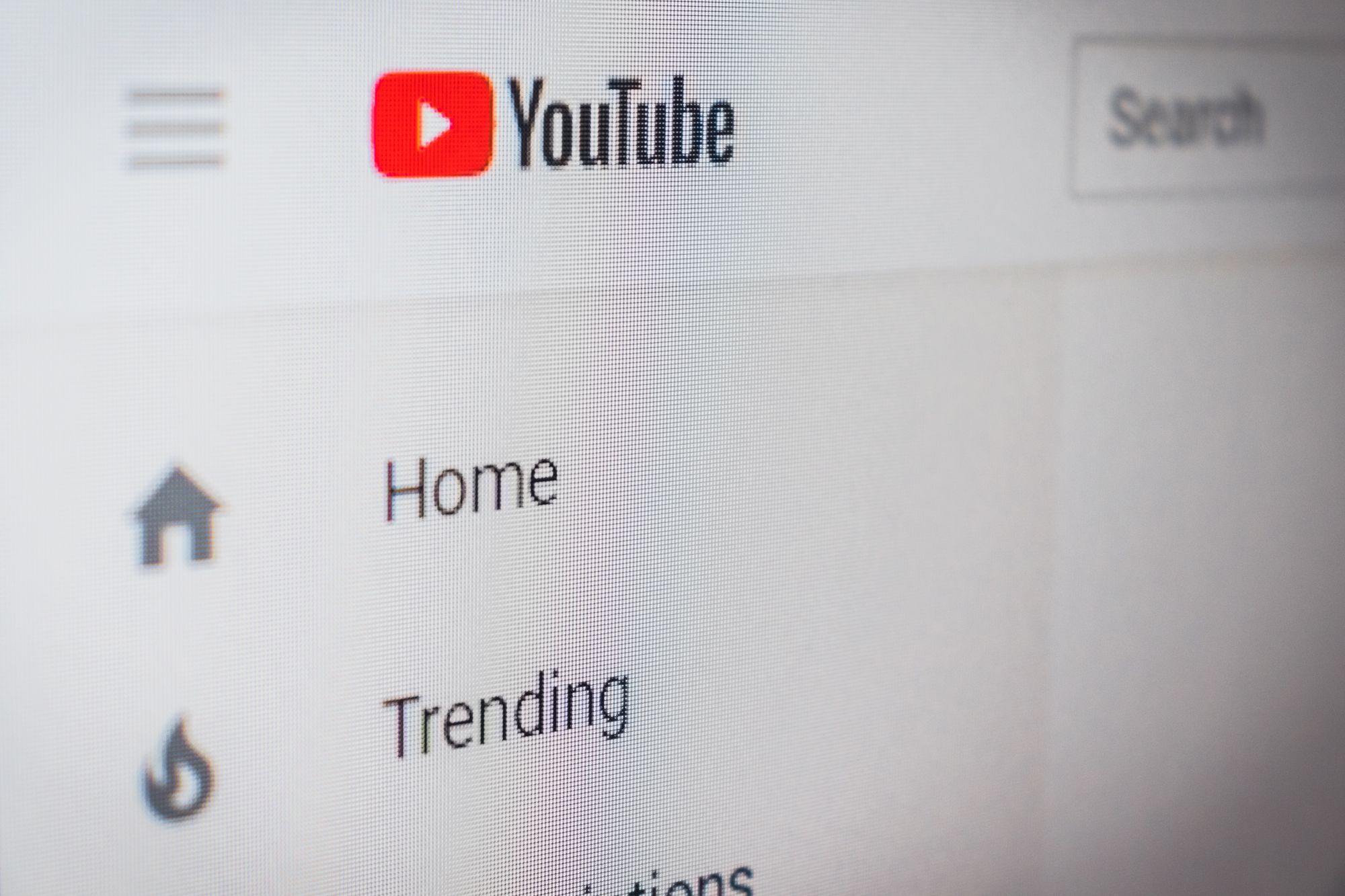The success of your online business relies on several key metrics including traffic, leads, conversion rate, sales, revenue, and returning customers.
Perhaps the most important metrics is conversion rate – the percentage of visitors who take the desired action on your website, like buying your product.
High traffic on your website is meaningless if your website doesn't convert well. On the other hand, a website with fewer visitors that converts exceptionally well can run circles around the competition.
This article covers everything you need to know about conversion rate, why it's important (if you're not already convinced), and how to improve it so you can generate more leads, sales, and revenue.
Let's get started!
What is Conversion Rate?
Conversion rate is defined as the percentage of website visitors that complete a desired action (or goal). The desired action is known as conversion or conversion goal. It could be a sale, user registration, or downloading a PDF – among many other potential actions, depending on your business.
When a visitor successfully completes the action on your website, that's a conversion.
The total number of visitors who take the specific action in a given period represents the conversion rate for that period.
The conversion rate is determined by the action you consider a conversion. There are two types of conversions:
- Macro conversion is a primary conversion on your website – usually a sale or lead
- Micro conversions are tiny conversions (or steps) that visitors take – adding a product to the cart, account registration, signing up for the free plan, etc.
Understanding the purpose of various conversions, and differentiating between macro vs. micro conversions, will allow you to define a strategy and plan your marketing efforts with more focus on what ultimately leads to a sale.
For example, let's say you are an online coach and sell subscription coaching plans.
Here are a few examples of conversions you can use:
- Newsletter sign up (lead generation)
- Watching a coaching video (engagement)
- Downloading the free guide (lead generation)
- Buying the basic subscription (sale)
- Upgrading to the premium plan (upsell)
- Buying additional one-off coaching services (upsell)
Several micro conversions lead to a macro conversion, which is usually a sale:

You have to define and set the path to macro conversion with multiple micro conversions. What that path looks like is where your expertise and skills come in. And when built this way, you can track and measure all these conversions to monitor the success of your online business and grow more thoughtfully.

How to Calculate Conversion Rate
Once you have identified which conversions to track, it's easy to calculate the conversion rate using a simple formula:
Conversion rate = (Total conversions in a specific period / Total website visitors in that period) x 100
For example, a total of 1,000 people visited your website in January, and 15 people converted. Your conversion rate for January will be 15/1000 = 0.015 = 1.5%.
The conversion rate of 1.5% means for every 100 people who visit your website, 1.5 take the desired action and convert. On in other words, your website converts at 1.5%.
The good news is you don’t have to calculate the conversion rate manually – any modern analytics tool (e.g., Google Analytics, a conversion rate optimization tool, or A/B testing tool) calculates and reports it automatically in their dashboard. Understanding what it means and how to improve the steps along the customer journey is key.
What is a Good Conversion Rate?
Research shows that the average conversion rate across all industries is 2.35%. The top 25% of all websites convert at 5.31% and the top 10% of websites convert at 11.45% and above:

Some industries have a higher conversion rate, such as finance with an average conversion rate at 5.01%. On the other end, ecommerce has an average conversion rate of 1.84%, so expect conversions to be less frequent and more challenging.
You can check conversion rate benchmarks to find specific conversion rates for different ad networks such as Google Ads, Facebook Ads, and others. For example, the average conversion rate for Google Ads across all industries for search ads is 4.40% and 0.57% for display network:

This helps determine the average conversion rate if you are running ads, giving you a good idea of where you stand compared to others in your industry.
As a rule of thumb, you shouldn’t necessarily be satisfied with the conversion rate you have, because there will always be ways to improve. We'll share ideas on how to have a positive impact with A/B tests and experimentation to improve your conversion rate below.

Why is Conversion Rate Important?
Conversion rate is important for several reasons – most important, it's a key metric in order to understand how well you generate leads in your marketing funnel.
Nothing matters more than leads for an online business.
1. Lead Generation
Conversion rate is the key to lead generation and sales. A high conversion rate means more website visitors take the desired action, convert, and move down the conversion funnel. This eventually leads to sales – and revenue.
Every micro conversion has a unique purpose, and stacking micro conversions leads to sales.
2. Higher Profit
Conversion rate impacts revenue.
A low conversion rate means you have to increase your marketing budget to generate more traffic, leads, and sales. This means you have to spend money to make money and your profit margin reduces. Conversion rate, on the other hand, helps you increase sales and revenue exponentially without spending more money on digital marketing.
Let's consider a quick example.
Say your business is an online store. Your ecommerce website receives 1,000 visitors and has a conversion rate of 2%. In total, your website earns $50 in revenue.
If you want to increase revenue to $100, you have two options:
- Double your marketing budget and drive 2,000 visitors
- Increase your conversion rate to 4%
Increasing the marketing budget will increase your revenue but it may not improve your profit. Increasing the conversion rate to 4% will increase revenue and profit. This is because you can convert a greater number of people with the same traffic and the same marketing budget.
If you want to increase profit, the best way is to increase the number of conversions.
Once you find a healthy balance, then you can scale your marketing budget accordingly.
3. Customer Acquisition Cost
Conversion rate plays a key role in customer acquisition cost (CAC) which refers to the cost your business incurs to acquire a new customer. The success of your business depends on how much you pay to acquire a new customer and how much your business earns from a customer for a lifetime (known as the lifetime value or LTV of a customer):

The CAC must be lower than LTV for a successful business model.
CAC depends on several factors such as click-through rate, marketing budget, and conversion rate. If your campaigns have a low conversion rate, it will increase CAC. With a high conversion rate, you can significantly reduce CAC (without spending more money on marketing) which increases LTV, leading to a successful business model.
4. Marketing Campaigns and Channels
Tracking performance of marketing campaigns and channels involves several key metrics, but nothing is more important than conversion rate.
Conversion rate is a way to measure the performance of marketing campaigns, even across channels. Suppose you are driving traffic through multiple channels including social media, search engines, Facebook ads, mobile apps, forums, email, and mailers.
By tracking conversion rate, you can compare these channels to identify the ones that perform best.
5. Understand Your Potential Customers
Conversion rate helps you better understand your potential customers. Marketing channels, campaigns, and ad types with a high conversion rate mean they are liked by your target audience.
If you publish blog posts or a newsletter, you can use conversion rate to evaluate what type of content your target audience likes to read. An analysis of blog posts and their conversion rate will reveal tons of data related to what type of content to write next, and even ways to leverage existing content into new products or ideas.
You can also identify what type of product pages convert better for different buyer personas.
Conversion rate provides you with unique site-wide data and gives you real insights about your potential customers that you can't easily find elsewhere.
See how Subkit helps teachers, coaches, chefs, and other small business owners with our SEO expertise: Request early access.

Conversion Rate Best Practices
The importance of conversion rate optimization can't be understated, and we're willing to bet at this point you agree with us.
Now you might be looking for a pro tip or two to drive better performance. We can do a few better.
Here are six website conversion rate best practices to help you optimize your online business for conversions:
1. Follow Search Engine Guidelines
If your business relies on organic traffic (web traffic received from search engines), you should follow search engine guidelines by Google to attract the right target audience.
This is an important best practice for improving the conversion rate of your website irrespective of your sector. Your website should rank for the right keywords so it drives highly targeted traffic, which leads to a higher conversion rate naturally.
Search engines like Google and Bing have guidelines for webmasters that tell them how to improve user experience and keep visitors hooked. Following these guidelines helps you in two distinct ways:
- Your website ranking improves significantly because you are following search engine guidelines
- You will have a high conversion rate as you will be driving the right target audience to your website
Here are Google guidelines on how to create helpful content for people:

Following these guidelines will significantly improve both the customer experience and conversion rate for your website. Your site will rank for your target keywords and will attract the right target audience – one that converts.

2. Optimize Landing Pages
A landing page is a marketing page used for lead generation. As a standalone page used for marketing purposes, your landing page is the most important page that must be optimized for conversions.
Since the purpose of a landing page is to generate leads, it directly impacts the conversion rate and should always be the first page to be optimized.
(On the flip side, if the conversion rate of a blog post is low, it doesn’t matter as much because blog posts aren’t always meant for conversion.)
If you have a landing page with a low conversion rate, you have a problem to address – your landing page is a dedicated, standalone page where you are sending targeted traffic and it isn’t converting well. That could be the one and only chance you have to convert those potential customers.
The low conversion rate of a landing page impacts the bottom line. It leads to high marketing costs with poor customer acquisition costs. While it's easy to send new visitors to your landing pages, if they don’t convert, you’ll lose it all in a flash.
So, optimize landing pages for better conversion rates.
Got it.
But how?
The first step is using a proven landing page format for better conversion rates.
Your landing page should follow this structure as shown by Unbounce:

An optimized landing page should have these elements:
- Add a powerful and catchy headline and sub-headline
- Add a featured image or video
- Write compelling, action-oriented copy with a focus on benefits
- Add a contact form for lead generation with the minimum number of fields
- Keep the CTA powerful and consistent throughout the landing page
- Add social proof
Having these elements and sticking with the landing page structure doesn’t guarantee a high conversion rate. You need to test and tweak all these elements to boost the conversion rate. And this leads us to our next best practice…
3. Invest in A/B Testing
The A/B test is the backbone of conversion rate optimization. Over 50% of marketers use A/B tests to increase conversion rates. Facebook, Google, and Amazon conduct more than 10,000 A/B tests every year to see what works for them and what doesn’t.
A/B testing (or split testing) is an experimentation technique where two versions of the same web page are shown to website visitors randomly to find which one achieves the conversion goal better.

Your website should receive decent traffic to successfully run an A/B experiment. This makes it a challenge for small businesses to run these experiments, but there is some good news: It doesn’t cost you much to run A/B tests. Google Optimize is a completely free A/B testing tool that makes experimentation a piece of cake for businesses of any size.
Follow these best practices for A/B testing:
- Create data-driven hypotheses to identify the right elements to test
- Avoid testing elements based solely on your opinion
- Test one element on a web page at a time
- Test elements that have the highest impact on conversion rate such as a CTA, contact forms, heading, copy, etc.
- Avoid running multiple A/B tests simultaneously
4. Minimize Form Fields for Your Target Audience
Contact form fields can directly impact your website's conversion rate. Often, a potential customer's journey to becoming a qualified lead, and then a new customer, begins with filling out a contact form.
For most websites, a successful conversion means lead generation, which happens when a website visitor submits a filled-out contact form.
For ecommerce sites, the conversion goal is usually a sale, which also requires customers to fill out a form providing their address and financial details, like a credit card or bank info.
The form and conversion rate are linked, so optimizing your contact form is crucial for boosting conversions.
Research shows that reducing form fields from 11 to four increases conversion rate by 120%. The highest conversion rate? Three form fields with a conversion rate of 25%.
To improve your conversion rate, it's best to keep the number of form fields to a minimum. Here are some proven techniques for creating and optimizing forms:
- Reduce the number of form fields to 3. This is a great way to improve the overall conversion rate.
- If you can't reduce the number of form fields, use multi-step forms. Multi-step forms can increase the conversion rate by up to 300% (according to Venture Harbour).
- Add a progress bar for longer forms. This significantly increases the ecommerce conversion rate, which can be challenging when trying to keep the number of form fields low.
- Use conditional logic to hide unnecessary form fields.
- Don't collect information that you don't intend to use..
5. Improving Your Call to Action
A well-designed form with only the essential fields may not convert at all if the call to action (CTA) is poorly designed. Your potential customer must click (or tap) the CTA to convert.
The call to action tells your target audience what action they should take to convert and move to the next stage in the conversion funnel. To improve the conversion rate for your website, make CTAs prominent so visitors can’t resist clicking them.
Research shows that personalized CTAs convert 42% better than non-personalized CTAs, while text CTAs have 121% higher conversion rates than button CTAs.
Does this mean you should always follow these rules?
No.
You need to test CTAs as much as you can. Sometimes, it is a small change that makes all the difference.
Here’s one example where changing the CTA button text from "Order information and prices" to "Get information and prices" increased the conversion rate by 14.79%:

To increase the conversion rate of a CTA, you can use A/B testing.
First, analyze the data and create a hypothesis. Then, run an experiment to either accept or reject your hypothesis.
In addition to A/B testing, there are several best practices that have been proven to be effective:
- Place the CTA above the fold so new visitors can see it immediately
- Use a contrasting color scheme to make the CTA stand out. It should be the most prominent element on the landing page
- Keep CTAs consistent on a single web page
- Use personalized CTA text to guide visitors on what to expect once they click the button.
6. Increase Page Load Speed
Improving your site load speed is the simplest method to boost your conversion rate. This is because it has a direct impact on user and customer experience, and is a reliable predictor of conversion rate.
According to a study by Portent, websites that take 1 second to load have a conversion rate that is 3x higher than websites that take 5 seconds to load, and 5x higher than websites that take 10 seconds to load.

A slow website not only results in low conversion rates but also negatively impacts sales and user experience. According to a study, 70% of potential customers are influenced by page speed and are unlikely to buy from slow websites.
To improve your conversion rate and retain users, it's crucial to make your site super-fast, loading in just one second for both desktop and mobile devices. You can start by inspecting your website load speed using PageSpeed Insights, a free tool that rates your website based on its load time for desktop and mobile devices. The tool provides detailed instructions and recommendations to improve page speed, helping you boost your site speed and conversion rate.
Here are some other best practices to instantly speed up your website:
- Use a better hosting company and switch to a dedicated or VPS hosting plan.
- Use a content delivery network (CDN).
- Compress images to reduce their file size.
- Use browser caching to reduce page load time.
- Use defer or lazy loading for CSS and JavaScript elements to load them only when needed.
- Use a reliable plugin based on your CMS. WP Rocket is a great option for WordPress users.
Key Takeaway
Conversion rate is the backbone of your online business. Conversion rate is a more accurate reflection of your business's performance, and can be more reliable to strategize around, than metrics like clicks or impressions.
To put your business on the path to exponential growth, establish conversion goals and begin tracking them with a free tool like Google Analytics. From there, by optimizing your highest converting pages through experimentation, you can confidently lead your business towards the success it deserves.
Start converting more customers today with an all-in-one tool for solopreneurs and small businesses: Request early access to Subkit.




